I’m a huge fan of the Asterix books, and I was very excited one day recently when I saw a poster on the tube advertising an Asterix exhibition. Very excited indeed. Asterix just isn’t the sort of property to get lots of things like that. Sure it’s had some dodgy movies over the years, some decent retro video games and has a theme park in France that I’ve yet to go to, but it’s not a property that you hear loads about on a regular basis at all.
One of the reasons I was particularly excited about this exhibition was that I misread it and thought it was a celebration of the life and work of Albert Uderzo, who was the artist of the duo Goscinny and Uderzo. Only the day before I went to the exhibition, however, I realised it was actually all about René Goscinny, the writer. My excitement went down slightly from ‘extremely excited’ to just ‘excited’. I always wanted to be a comic artist and the Asterix books were one of my main inspirations and I’ve always loved the artwork.
The exhibition was being held at the Jewish Museum up near Camden Town in North London. René Goscinny was jewish and this is a fact that isn’t often known and they were rightly proud to share his life with the museum’s patrons. He had a very interesting life actually. French born of Jewish immigrants from Poland and Ukraine, young René had to ship out to Argentina with his family at a very young age, only to return to France much later and then travel to other places such as New York as a writer and caricaturist.
There were some interesting fact cards, photos, and documents from these early stages of René’s life. You then move on to the main part of the exhibition (about a third of the overall size) which is focussed around his work with Albert Uderzo onto Asterix books. A third of the exhibition was about his early life, a third was about his work on the Asterix books and a third was about his later work. I was only really interested in the middle third about Asterix.
The highlight of the exhibition for me was certainly the original artwork by his colleague Albert Uderzo. They had 4 large pieces of art, and this is what I had come for. It was fantastic to see these in the flesh. To see the pencil marks and brush strokes, see how large the artwork was in reality, see notes and corrections in the margins. I always find it fascinating to see comic art in the flesh and this was no exception. His style seems so effortless. I definitely would love to own some original Uderzo Asterix art one day.
But it wasn’t just about the art. The whole story about how Goscinny and Uderzo met and began working on Asterix was all very interesting. They had a good interview with the pair available to watch and listen to via headphones. They also had some very interesting documents such as the typed outline of the first ever Asterix book and a list of all the character names etc.
The exhibition runs until September 30th, so do check it out if you’re interested and can make it into London. It’s well worth a visit for any Asterix fan. Find out more here.
In the image below, a young René Goscinny looking for work sounds a lot like Yoda,
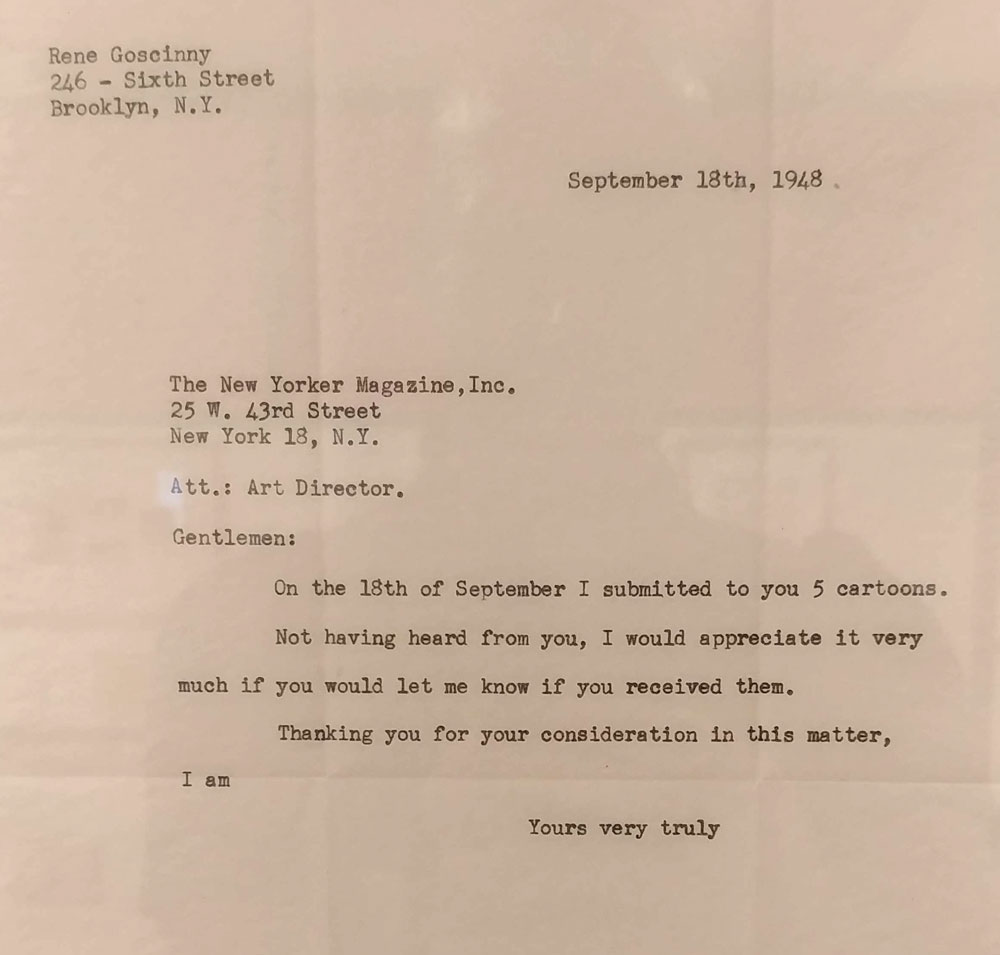
There were a couple of interesting headphone and TV stations with some good footage. This one had a great interview with Goscinny and also Uderzo.
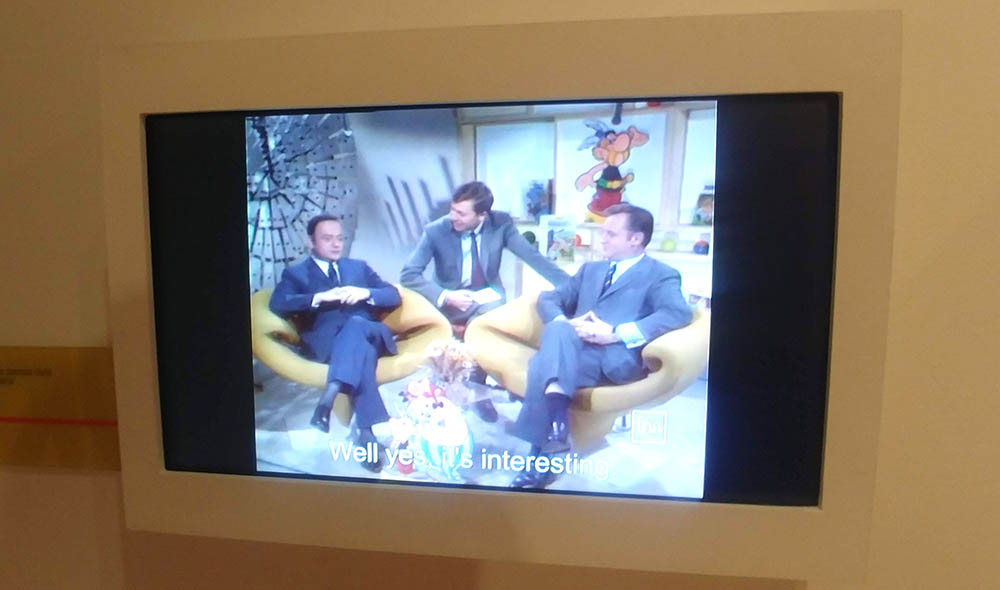
Apparently in the UK when Asterix was first shown he was rebranded to be British and was called Little Fred in one publication and Beric the Bold in another.

Dogmatix appeared throughout the exhibition in a cool way. Nicely done.
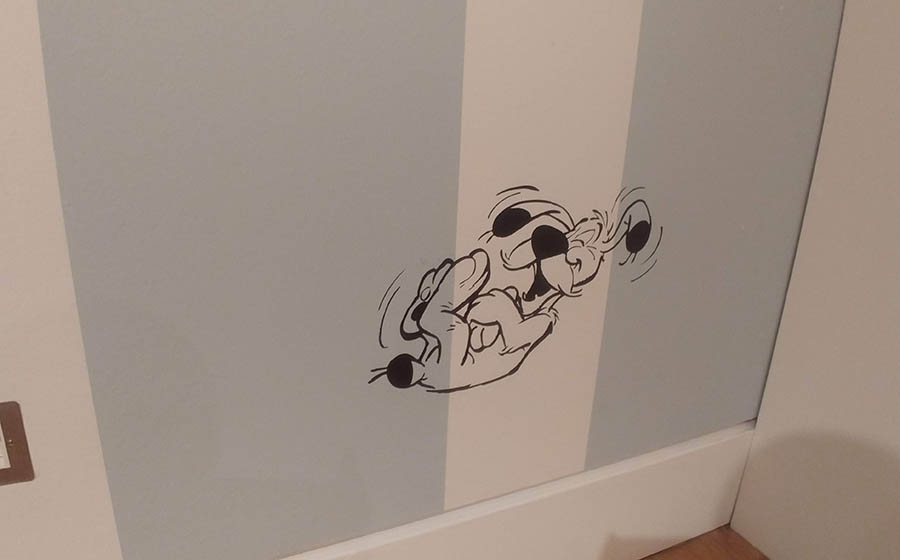
This article contains a cartoon depicting what happened when Goscinny and Uderzo came up with the idea of Asterix whilst sitting in a cafe. The cartoon shows them laughing so much that they get taken away to the loony bin!

A very cool document with the script for the first Asterix book. René would write the description on the left and the speech text on the right.
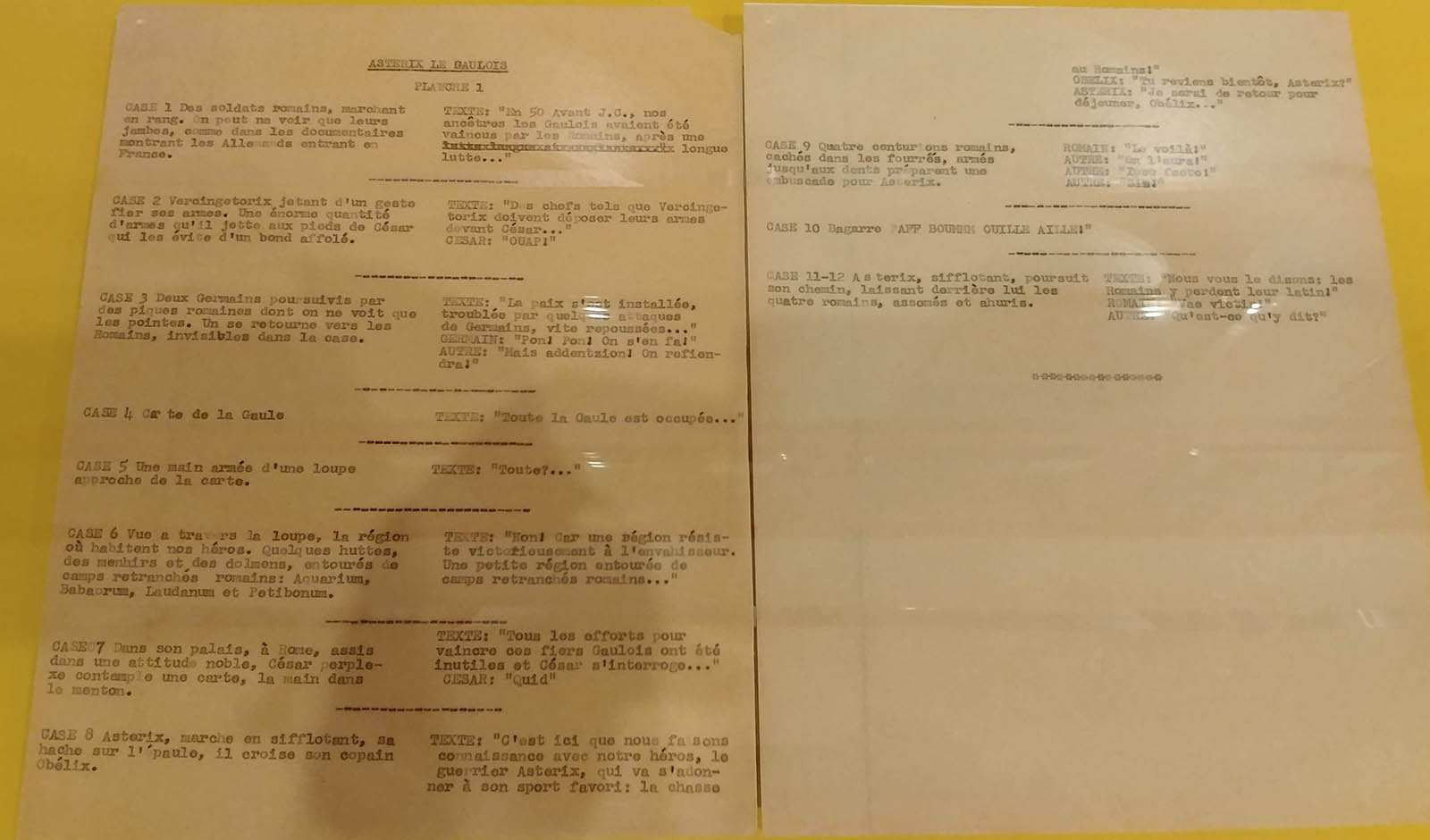
Goscinny’s outline for the first Asterix book, including his list of characters at the top.
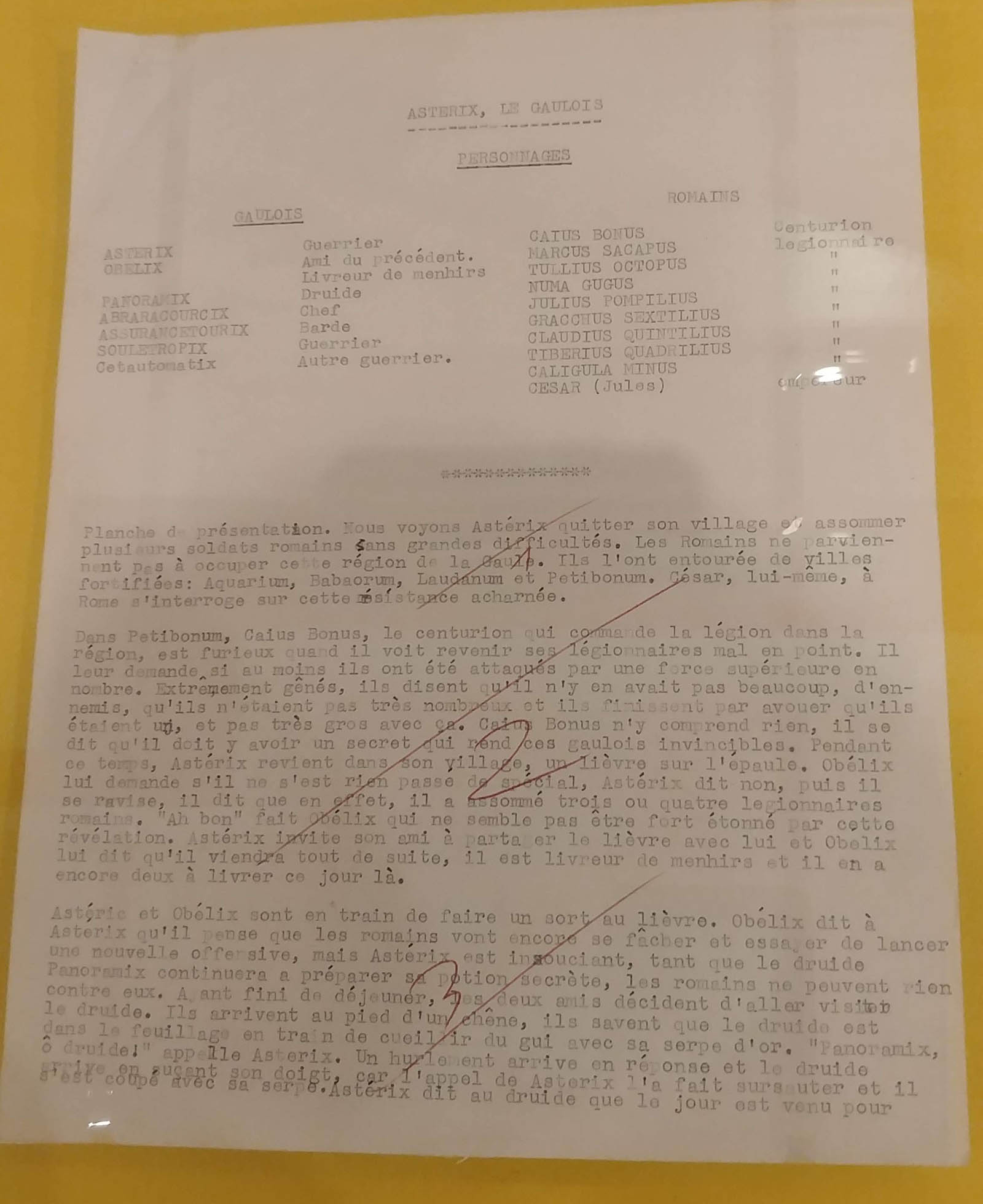
Some notes about the names of the characters.
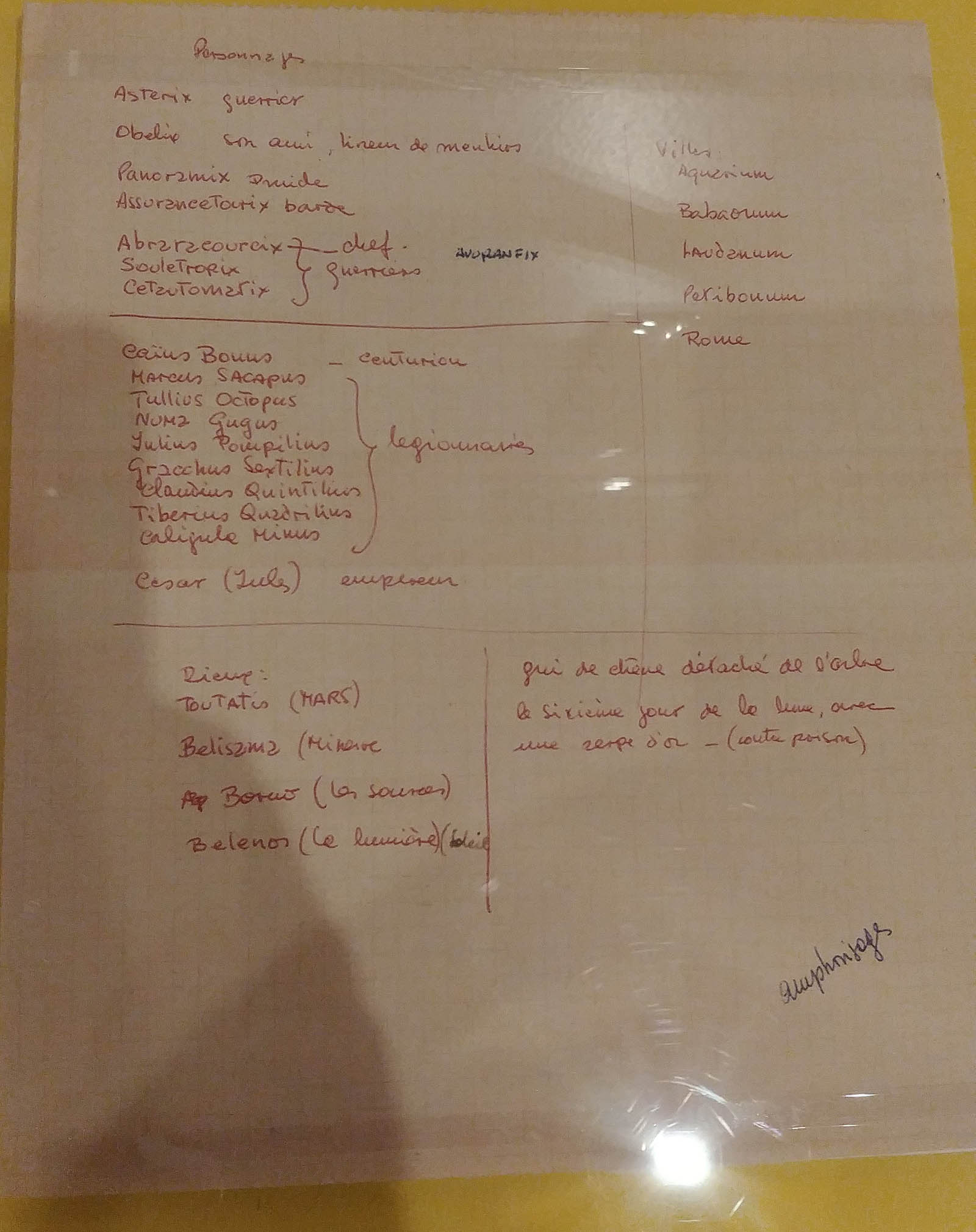
The French and English versions of the first Asterix book.
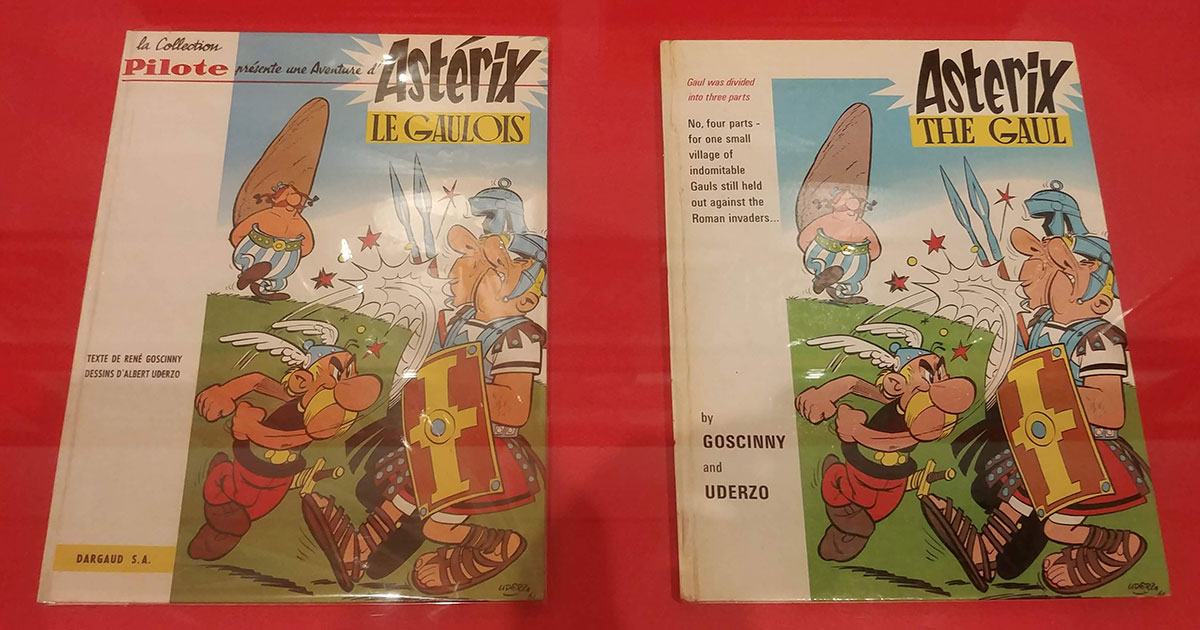
Intriguingly we spotted an American version of The Great Crossing. I wonder how much is different. Just US spellings? Or some of the names and jokes too? Might have to look for this edition on eBay.
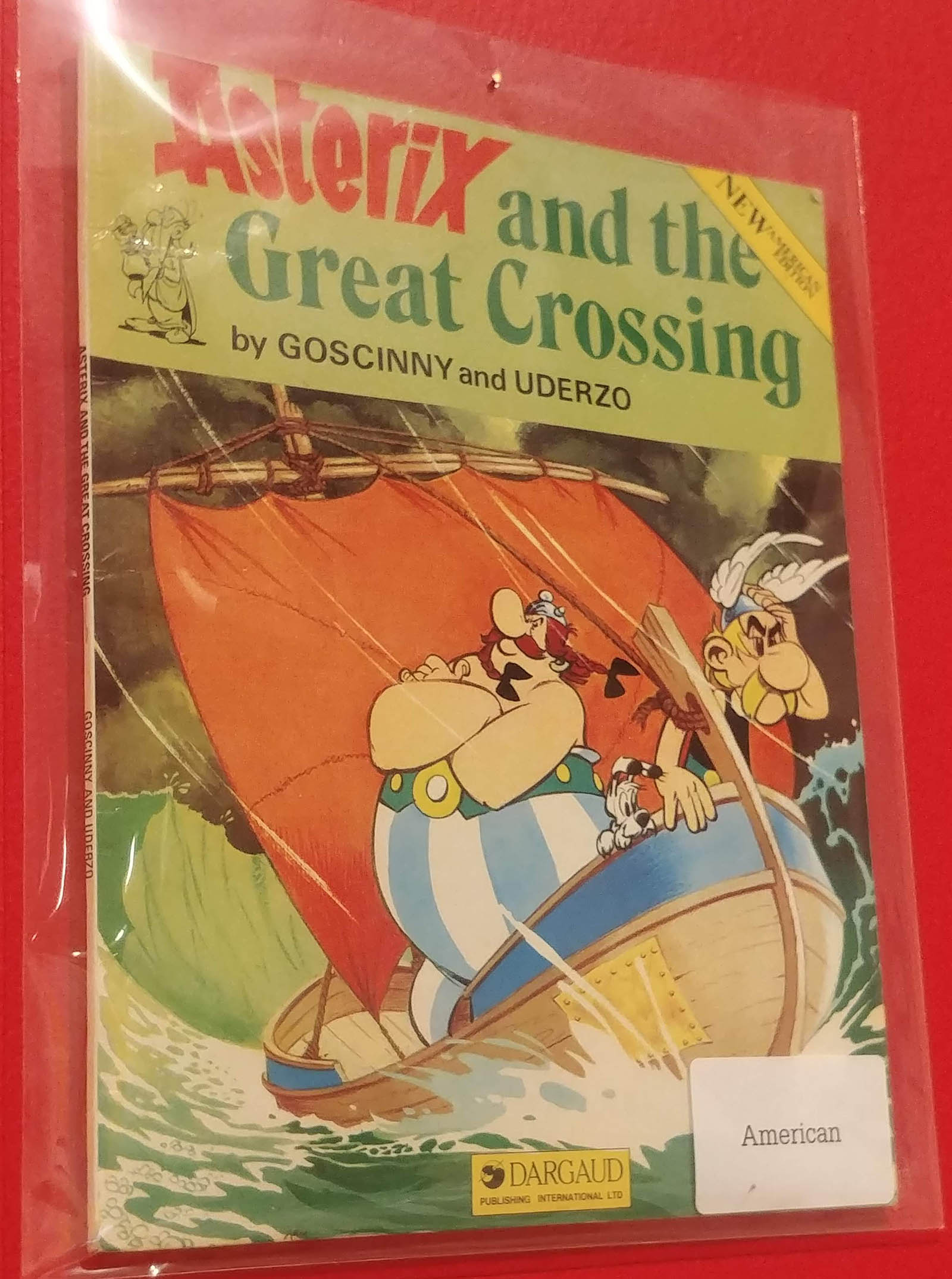
There was even a chance to get dressed up in Asterix hats.

One of the things I love most about the Asterix books is the clever names. I think the original French names were quite clever already but the English translator, Anthea Bell, took these to a whole new level. Genius.
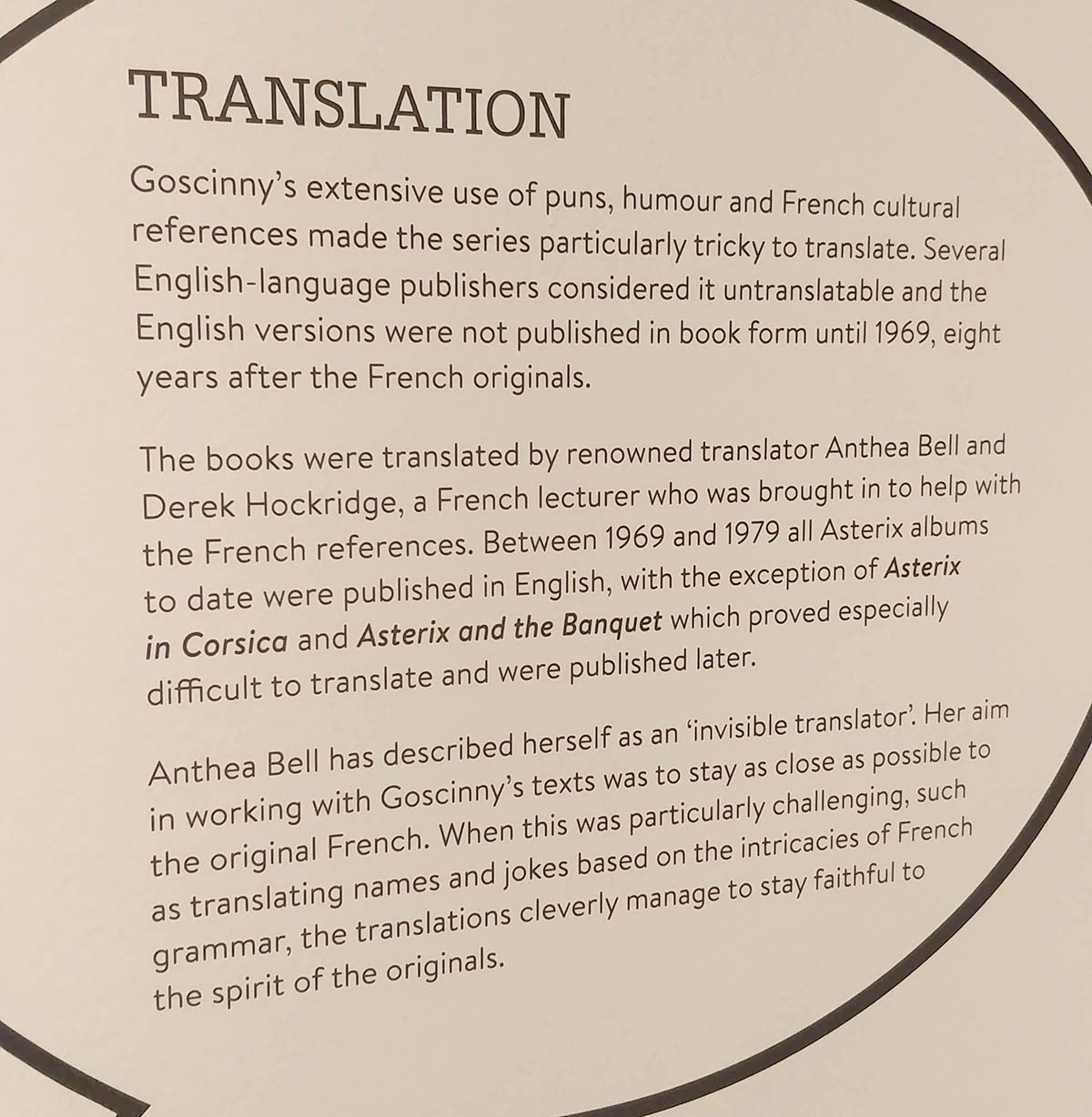
And this wall in the exhibition let you make up your own combination of names! A nice touch.

Here is the main attraction for me. The amazing Albert Uderzo art!



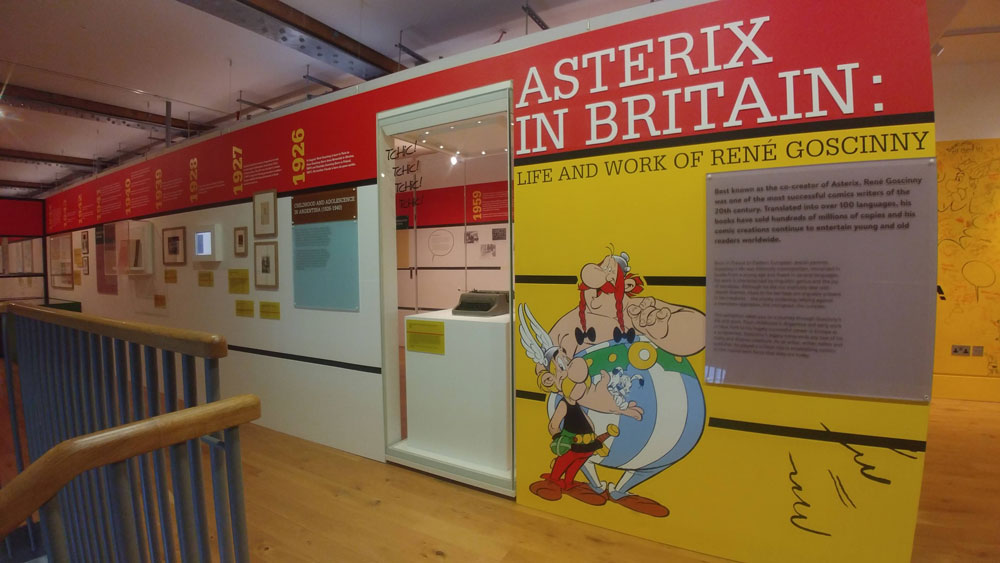
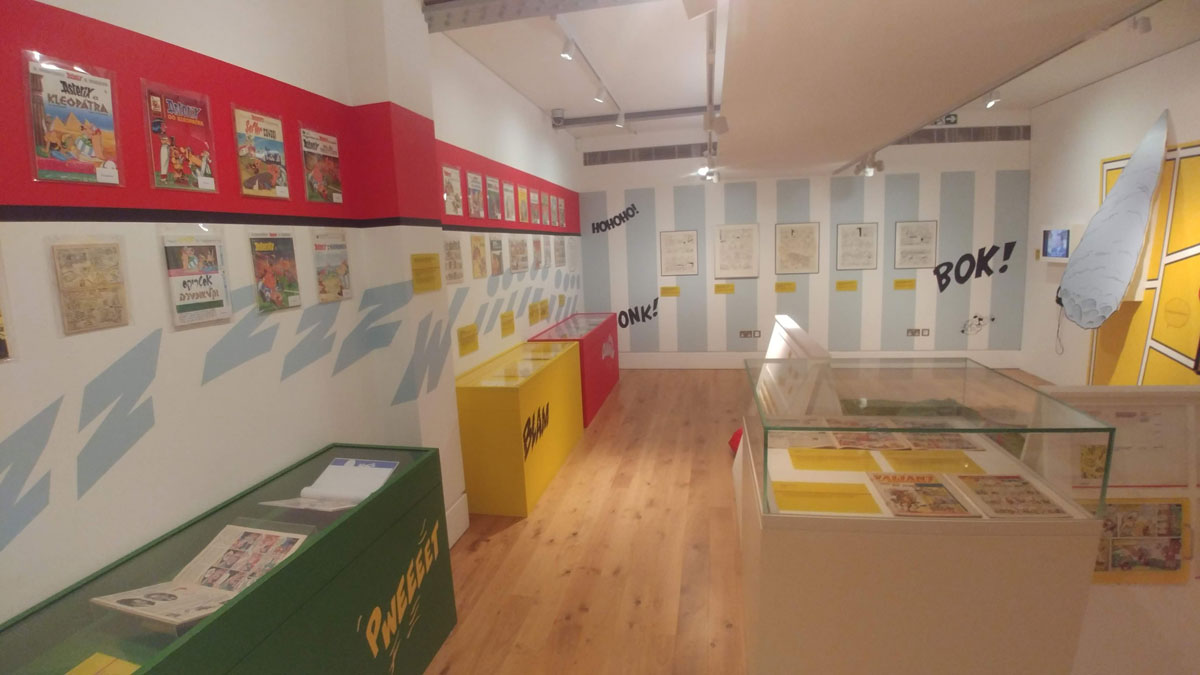
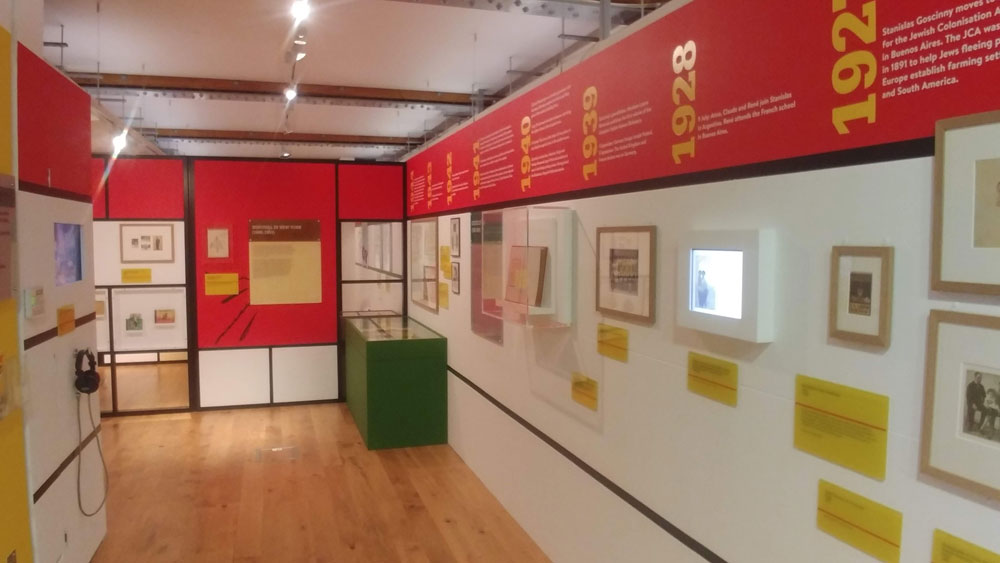
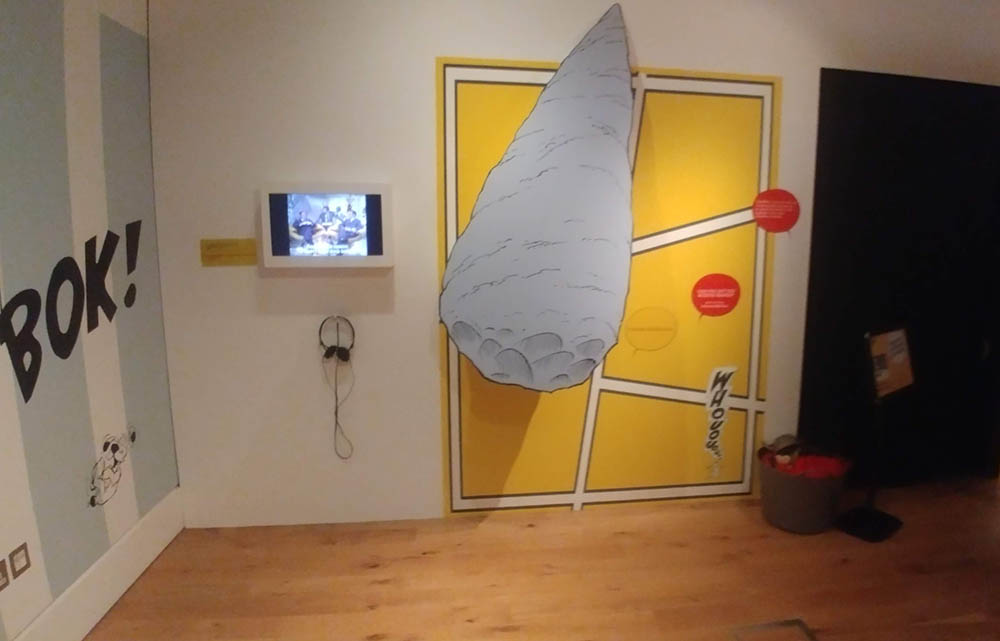

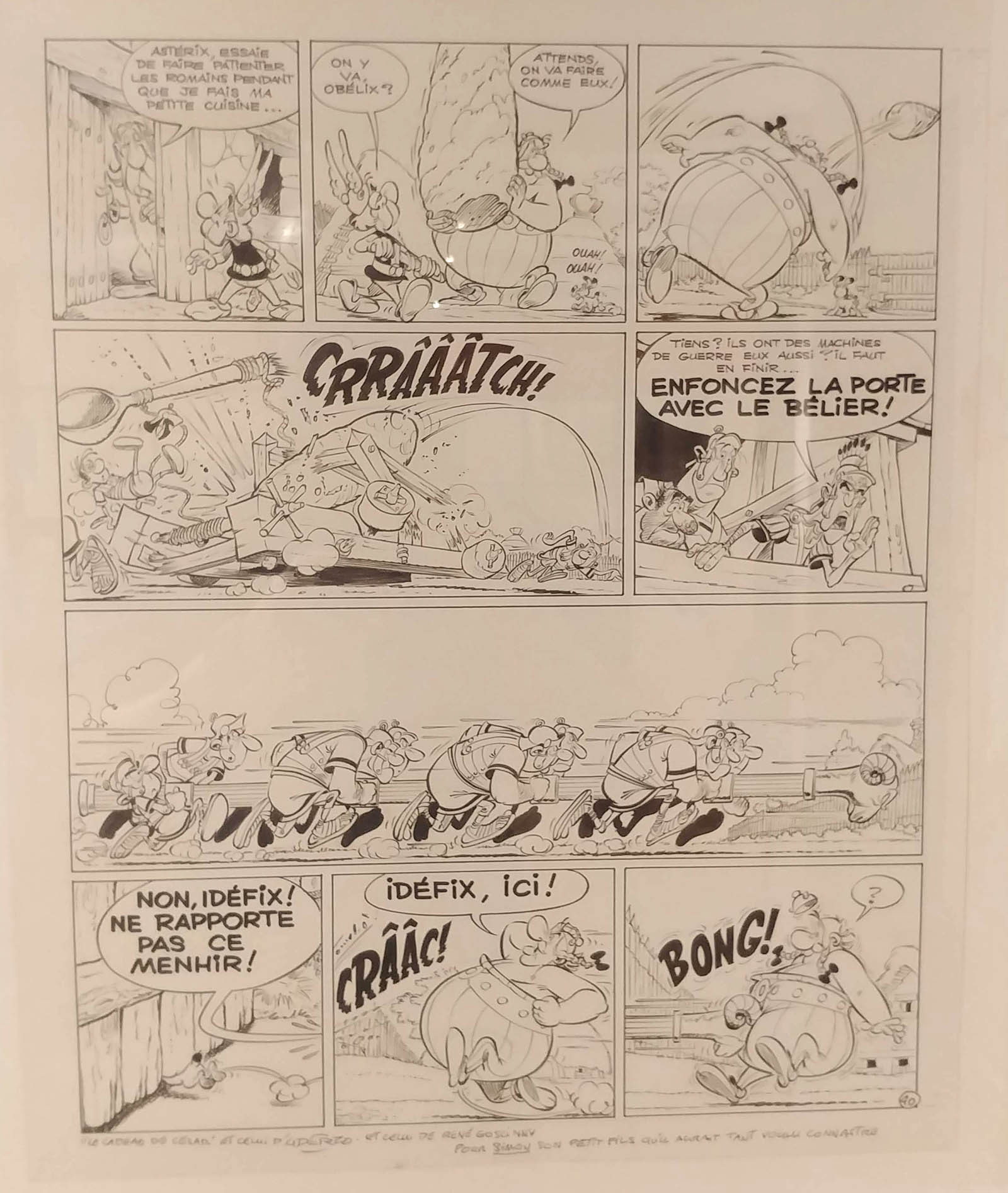

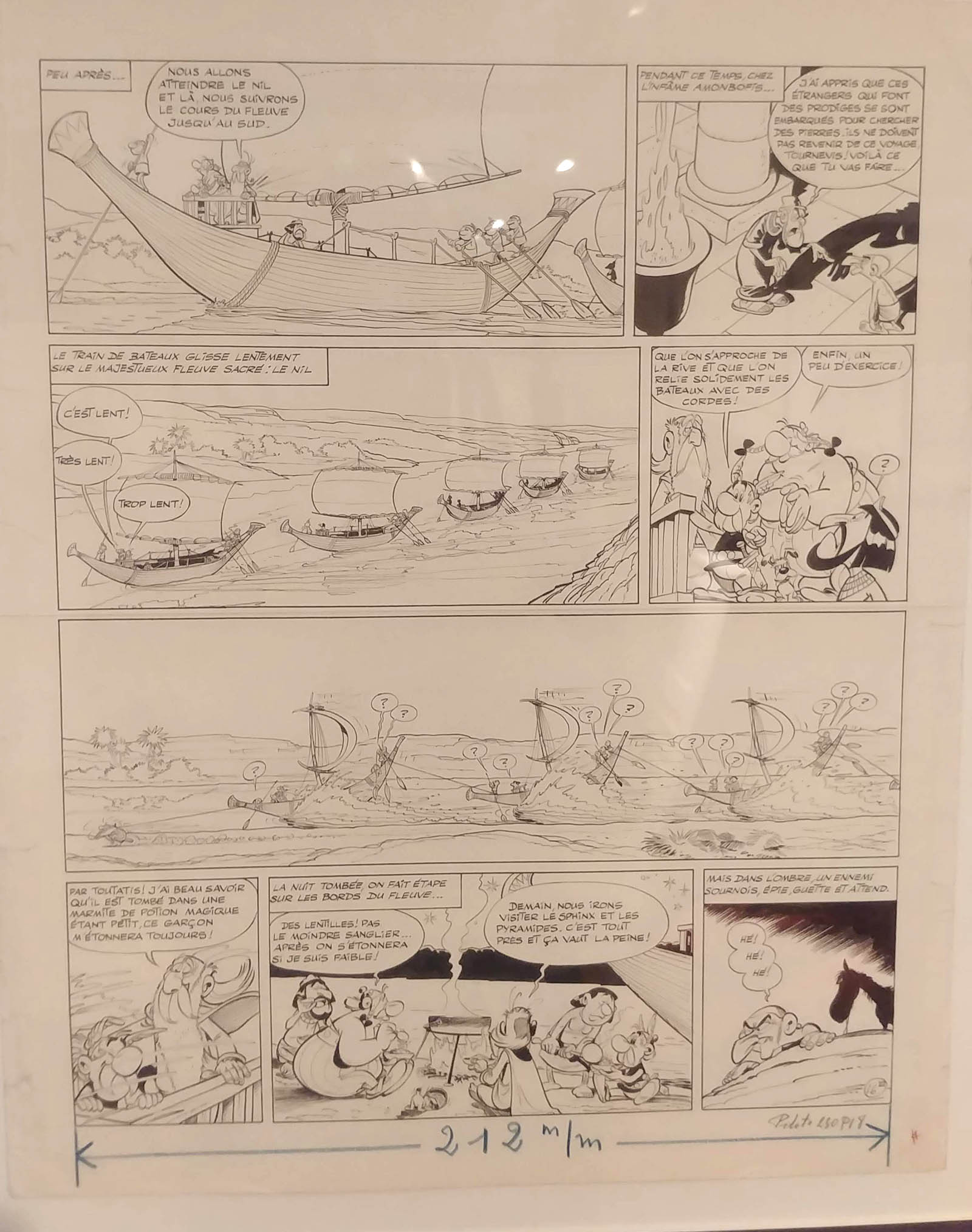
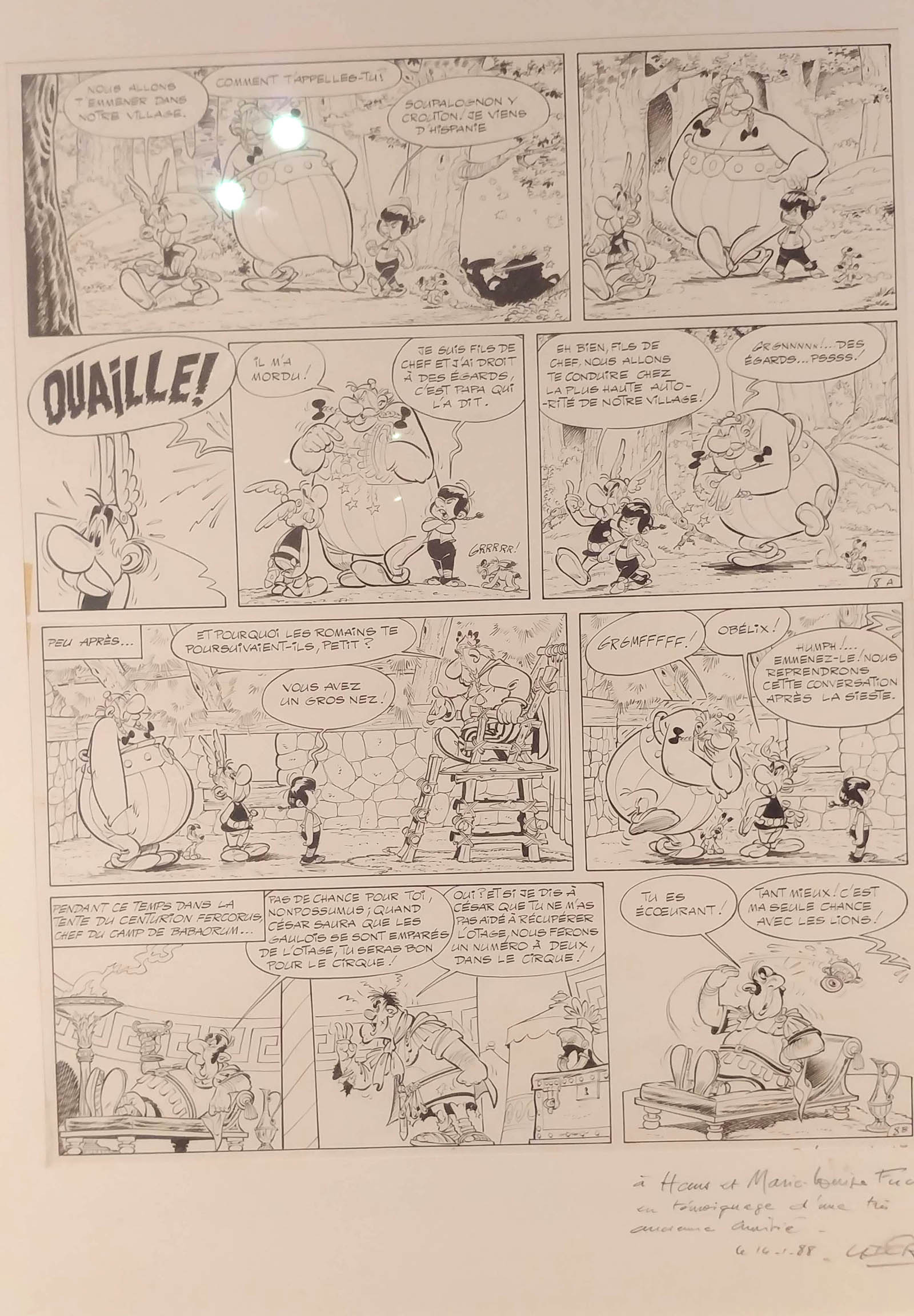
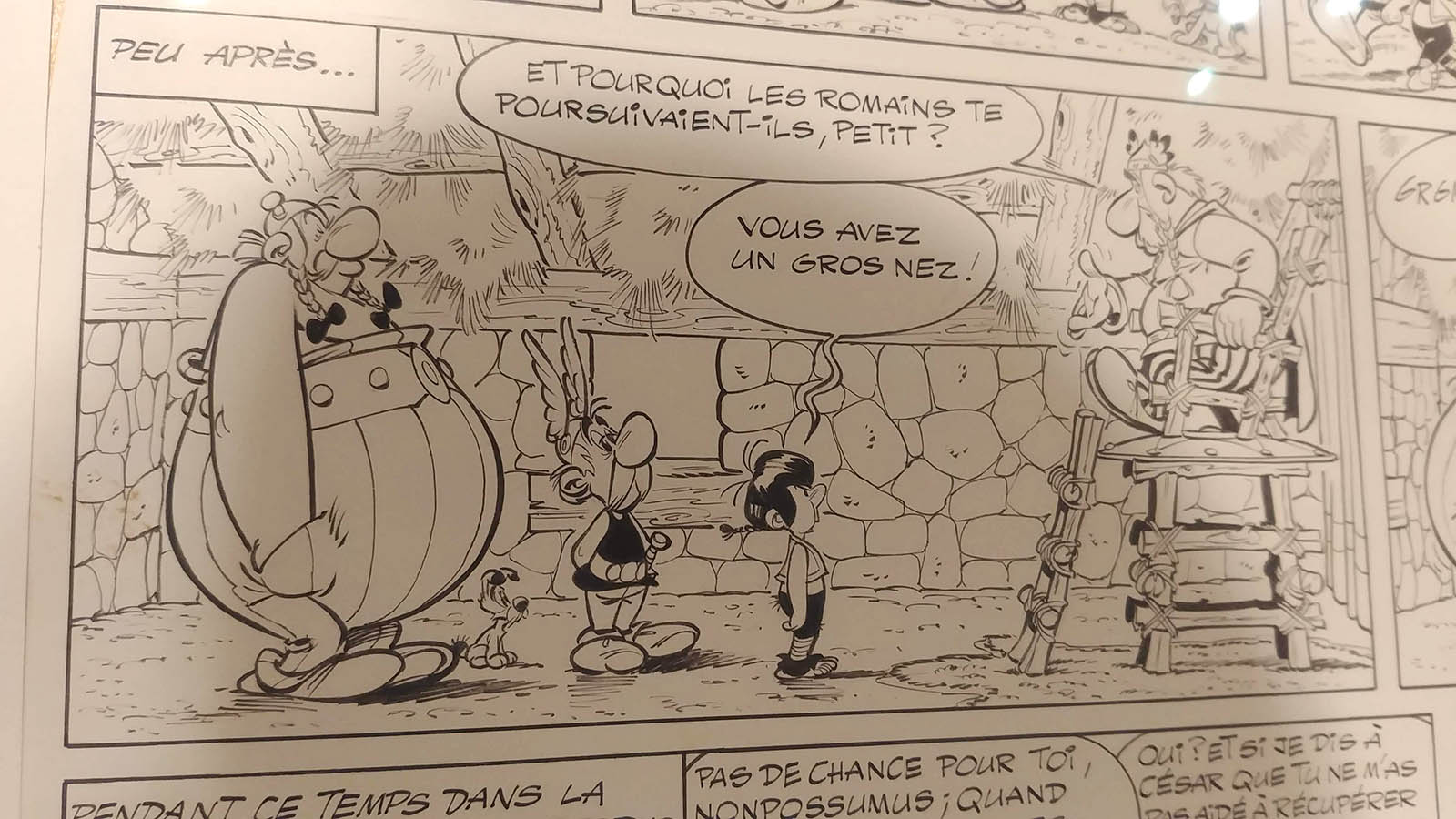
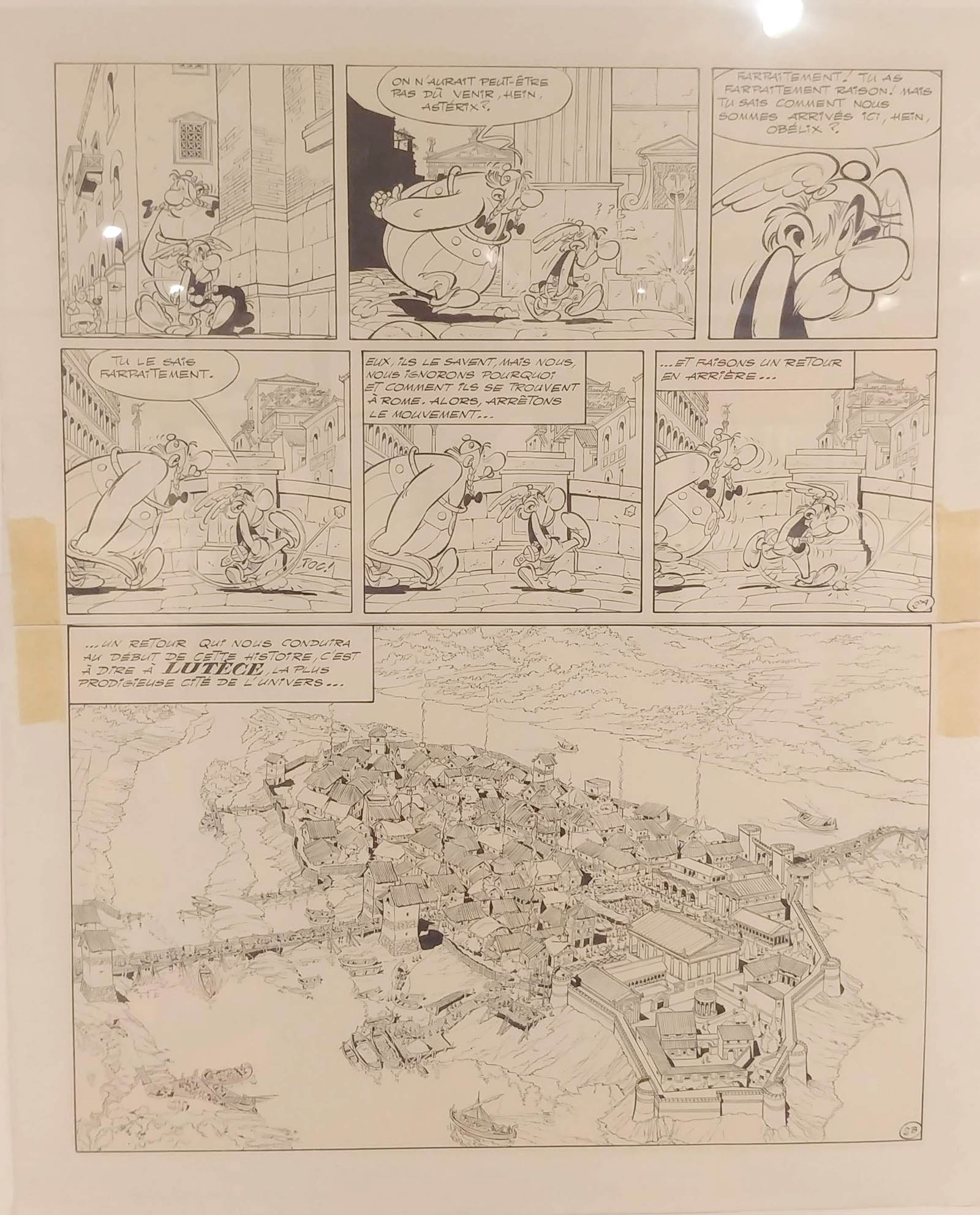

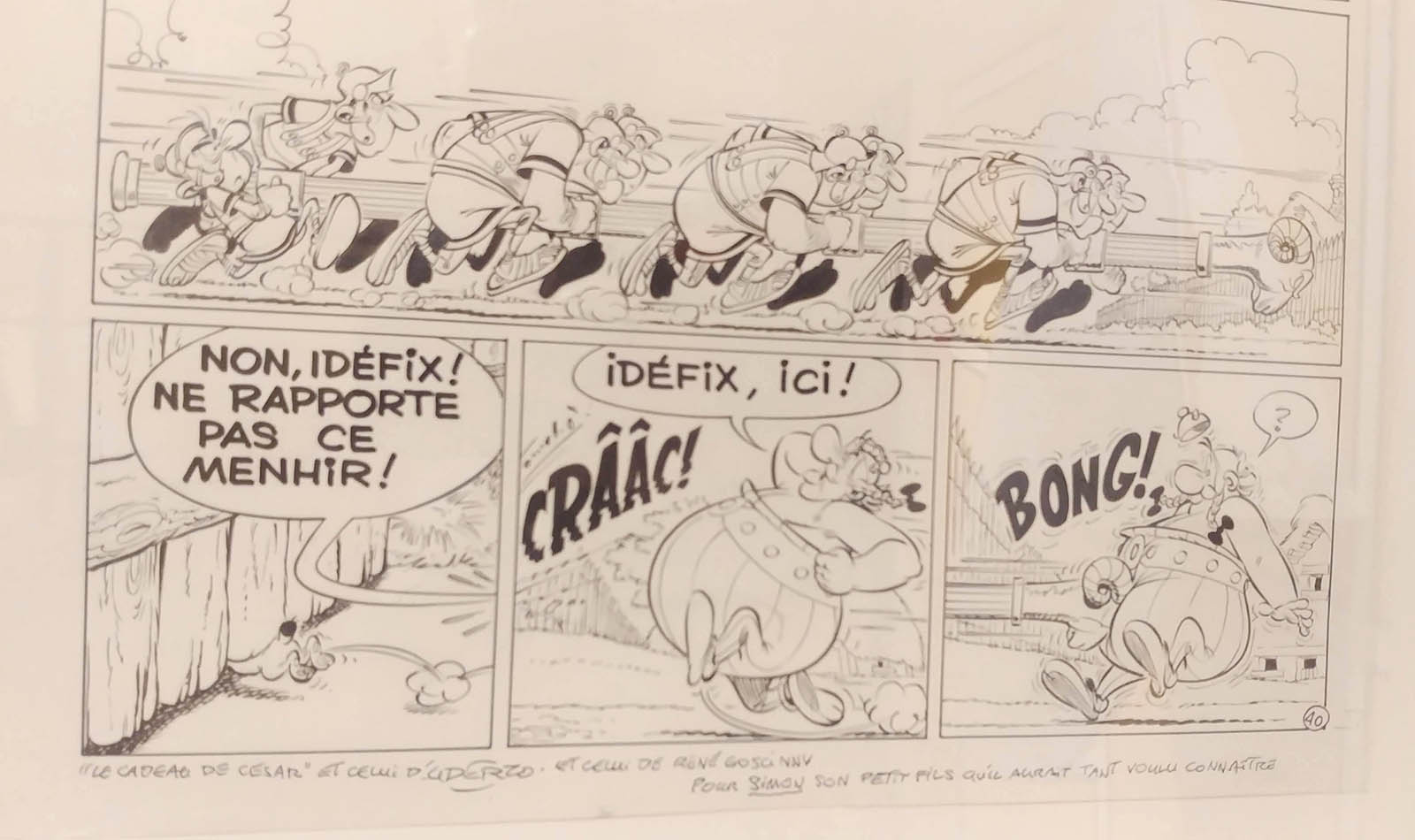
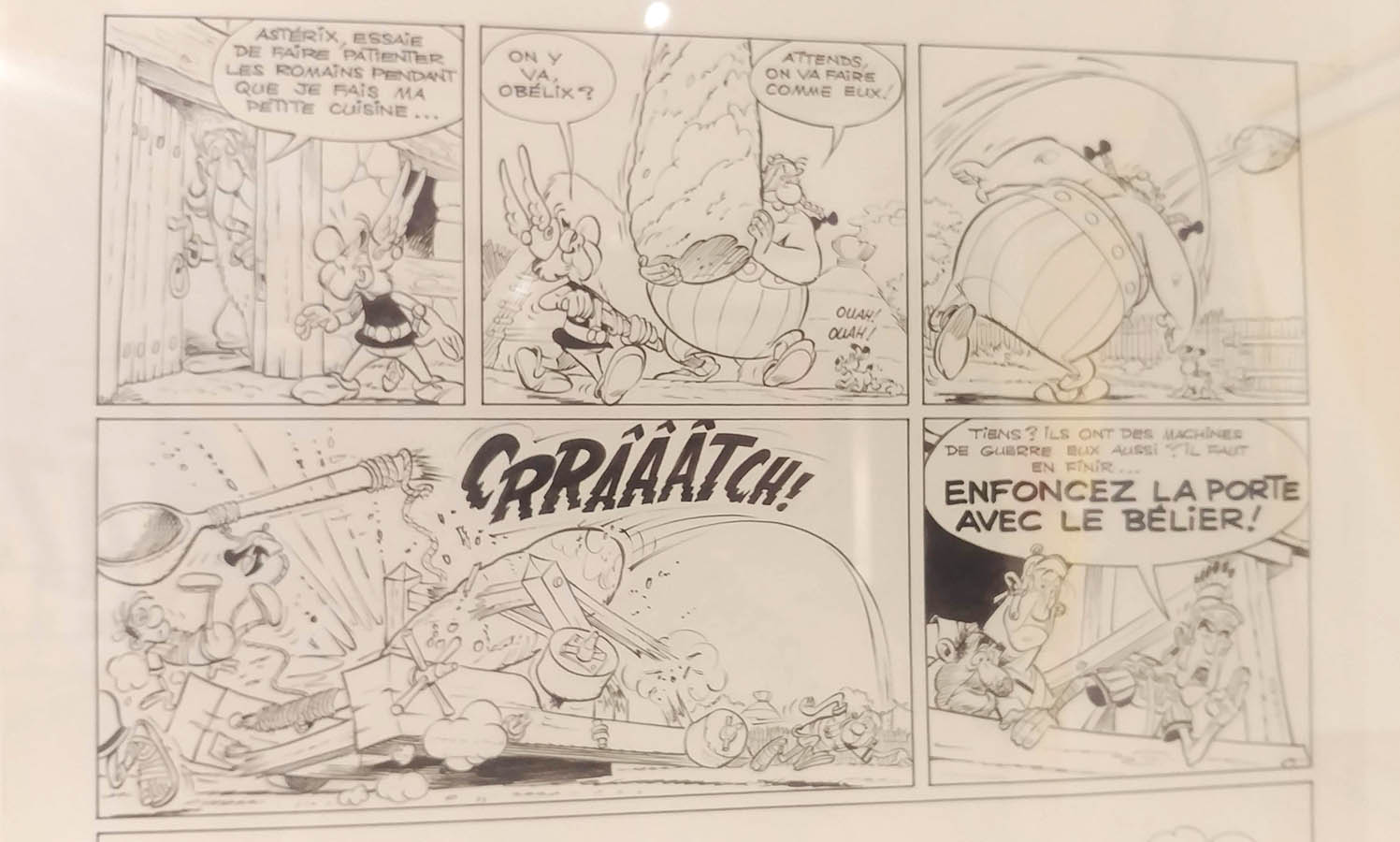
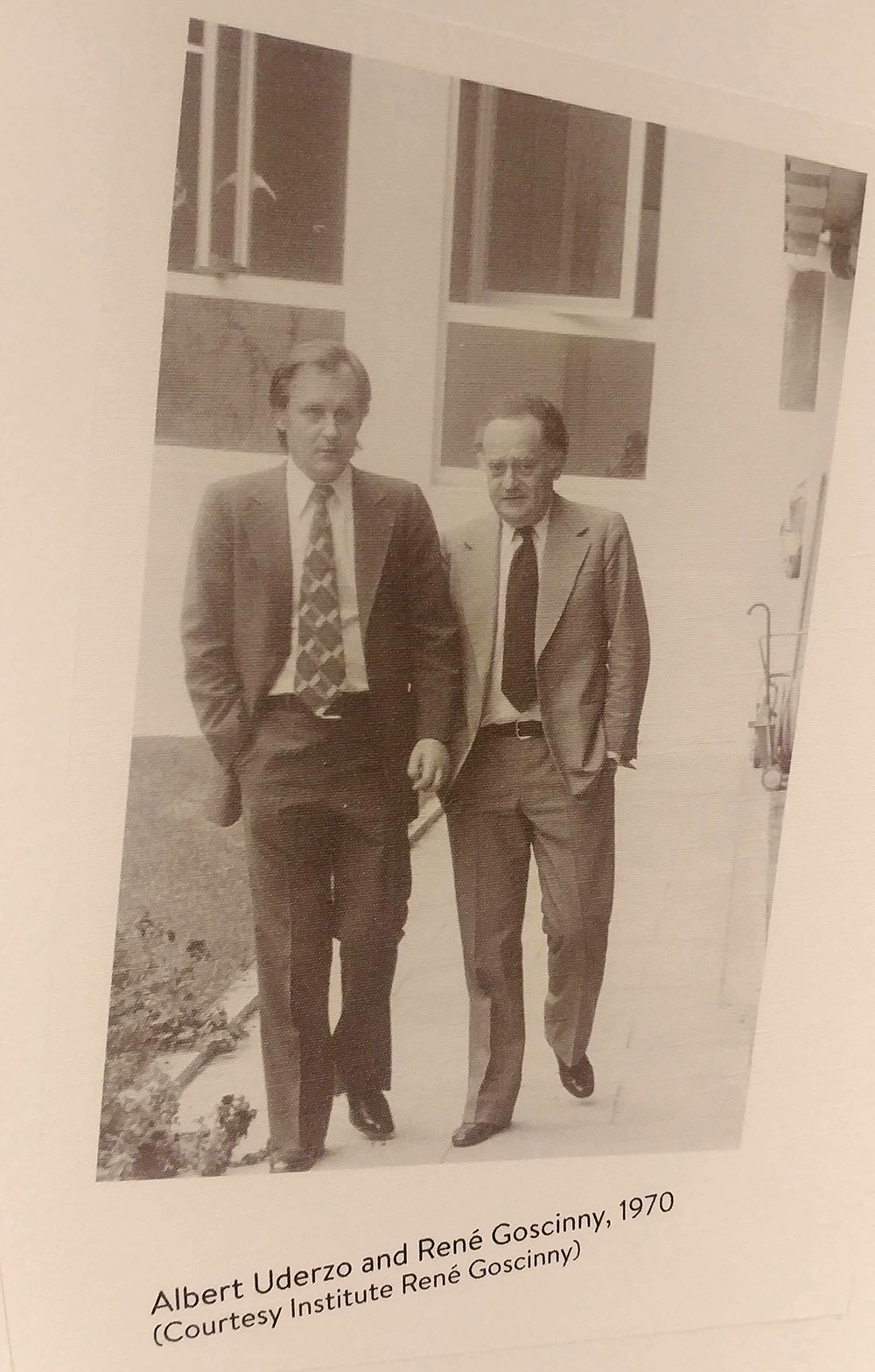
Jamie
Feb 12, 2024 -
So how big were the original art pages?
Retromash
Feb 12, 2024 -
Hi Jamie. If you look at the photo of the wall with the blue stripes you can see the size of the art pages on the wall and a standard plug below it, which gives the scale. I’d estimate maybe about 14″x 18″ or something like that perhaps.